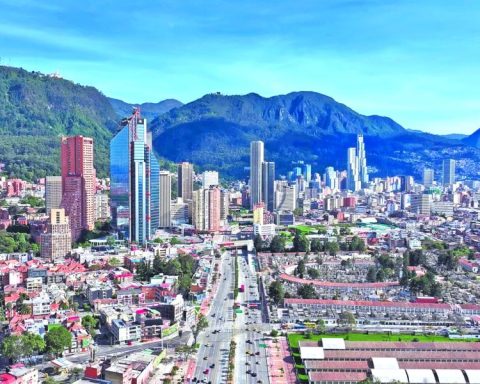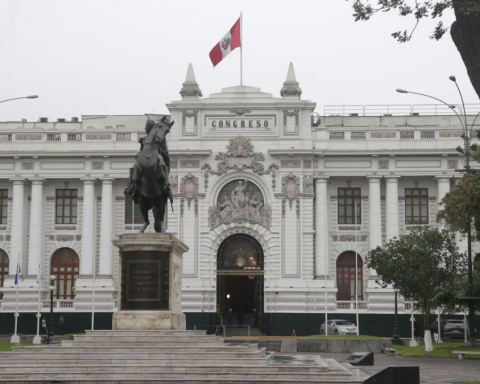
Deputies joined the lawsuit filed by environmental organizations against the water utility Aguas Andinas and the company AES Gener (today AES Andes), controller of the Alto Maipo hydroelectric project that, according to the plaintiffs, puts the supply of drinking water for the Chilean capital at risk. .
The legal action, filed in 2019, seeks to annul a contract between the two companies that establishes the dumping and conduction of water by the utility for operations of the energy project, a fact that “moves away from the sole object established by law” (production of drinking water) and “constitutes a side business”.
“We must understand that the progress of the Alto Maipo project puts at stake the supply of drinking water for the entire Metropolitan Region. In other words, the lives of millions of people are put at risk, once again, just to protect oligarchic interests, which they believe they are above the law,” said the elected deputy of Approve Dignidad, Camila Musante.
“I am part of this lawsuit because it is urgent to protect the basin of a river that is about to disappear, because no person, company or group of companies can be above the law and because defending the land and water is defending our very existence” , he added.
“We consider it unacceptable that, once again, business between large economic groups is prioritized over the basic needs of families in the Metropolitan Region and the country. Aguas Andinas has the obligation to use the water it receives solely and exclusively to provide it to the inhabitants of the region”, affirmed for his part the deputy of the Humanist Party, Tomas Hirsch.
“We hope that our letter is accepted and that the water intended for human consumption is never used again in other activities by the company in charge of the service,” said the parliamentarian.
The socialist deputy Daniel Melo, also part of the annulment claim, stated that “we are facing an unprecedented case where it is intended to use such a scarce resource and that we must protect, such as the drinking water of the Metropolitan Region, for purposes that are not human consumption, but of a hydroelectric project of which I have been and am very critical”.
2021 closed with the record of being the fourth driest year in Chile since records have been kept, a situation that is especially critical in the central zone, where thousands of inhabitants receive water daily thanks to cistern trucks.
The drought, now in its 13th consecutive year, is considered a consequence of the climate crisis, but environmental organizations denounce that the Chilean water management model – whose origin dates back to the neoliberal economy established during the dictatorship – has aggravated it , while the Water Code is already discussed in the Constitutional Convention.
It is worth mentioning that Alto Maipo, due to a compliance plan before the Superintendency of the Environment, had to request a review from its RCA to see how it had modified an environmental variable associated with bodies of water. This procedure despite having concluded what is appropriate is the review of the claim resources.
It is also one of the initiatives that must be submitted for evaluation by the Committee of Ministers and that, according to a note from Third, the government of President Sebastián Piñera defined as one of the priority investment projects for the ministerial delegation led by the Ministry of the Environment, before March 11; when the new administration of President-elect Gabriel Boric takes over.
Alto Maipo managed to successfully complete the synchronization of a second Unit to the National Electric System, by injecting for the first time renewable generation from unit 1 of the Las Lajas plant. The commercial operation of the project is planned for the end of March 2022.
The project belonging to AES Gener (AES Andes since August 2021) and whose entire corporation is in the hands of Inversiones Cachagua Ltda (91.3%)—is subject to review of its Environmental Qualification Resolution (RCA) online with the provisions of article 25 quinquies of Law 19,300.
Although the Luksic Group initially participated in the project, in 2017 it sold the 40% it had in Alto Maipo through the Los Pelambres mining company.
As detailed Pulse in October 2021, the initiative spun out of budget control many years ago. Its total investment amounts to US$3.5 billion, but the initial estimate was US$2.05 billion. Until now, AES Andes will allocate, reported at the end of August, US$ 1,018 million of investment.
A few days ago, the governor of the Metropolitan Region Claudio Orrego (DC) made a call to the authorities, companies and citizens about the water crisis that the country is going through, announcing that a possible rationing of drinking water in area.
Through his Twitter account, the governor wrote that “in the midst of this mega drought and climate change we cannot rule out water rationing for RM this year.” To this he added that “the call is transversal: people, organizations, companies and the State must take care of a resource as valuable and scarce as water.”
Aguas Andinas and the Alto Maipo run-of-the-river hydroelectric project signed, in 2011, an agreement that aims to prevent the commissioning of the hydroelectric plant from conditioning the operation of the El Yeso reservoir and, consequently, the present or future water supply of the city of Santiago. As noted the company’s website“this agreement seeks to prioritize human consumption in Santiago, over other uses.”
“The Agreement regulates the relationship between the water rights that AES Andes and Aguas Andinas have. The former are non-consumptive (hydroelectric generation) and the latter are consumptive (human consumption).” It also states that the Alto Maipo hydroelectric project “does not belong to Aguas Andinas, nor has it received water rights from the company.”
And they emphasize that the agreement established that the management of the flow of the El Yeso Reservoir will be the exclusive responsibility of Aguas Andinas, “which will always be operated in accordance with the drinking water production requirements of the city.”
It should be noted that the hydroelectric project considers different plants and collection points, among which is the one located at the foot of the El Yeso Reservoir.

















